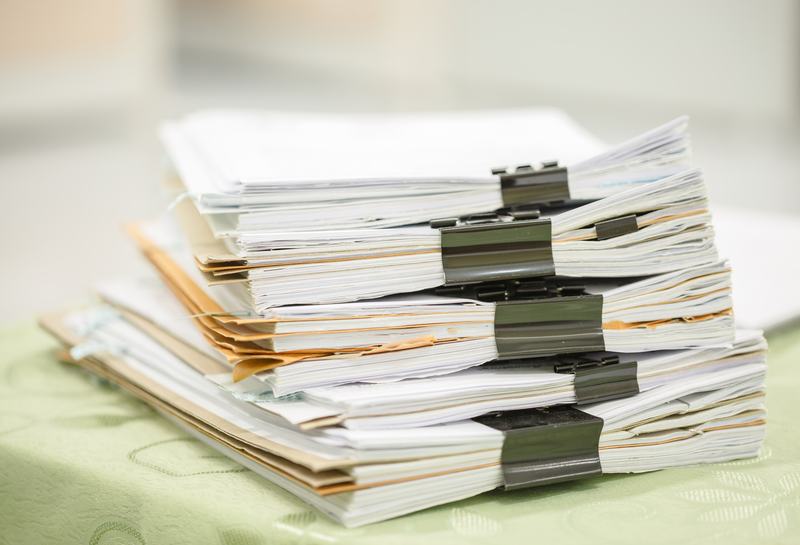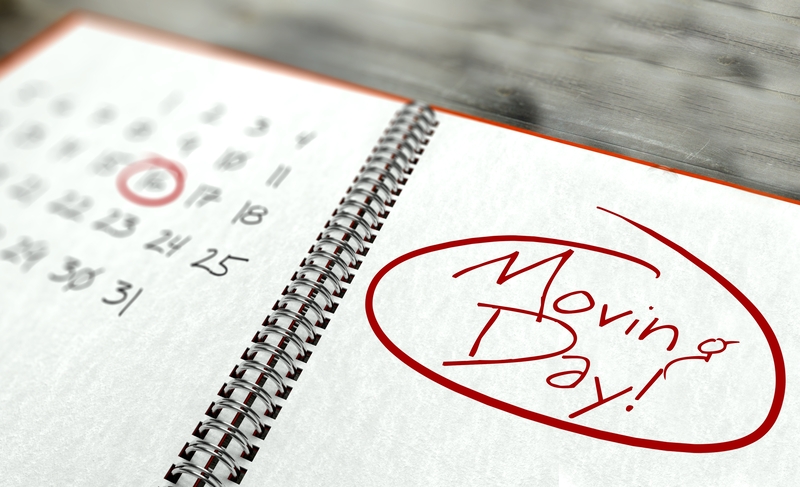Avoid the pitfalls of DIY piano moving by understanding its complexities
Posted on 02/06/2025
Avoid the Pitfalls of DIY Piano Moving by Understanding Its Complexities
Piano moving is not as simple as it looks. Renting a truck and recruiting a few friends may seem like a cost-effective strategy, but when it comes to transporting a piano, the risks and hidden challenges can lead to disastrous results. In this article, we will explore in-depth the complexities of DIY piano moving, reveal common pitfalls, and discuss the crucial reasons why professional expertise is indispensable. Whether you have an upright, baby grand, or a concert grand piano, understanding the nuances is vital for protecting your prized instrument and your property.

Understanding the Realities of Piano Moving
The sheer size and weight of pianos, coupled with their delicate internal parts, make these instruments notoriously difficult to move. Even the smallest upright piano can weigh hundreds of pounds, while grand pianos can tip the scales at nearly 1,400 pounds! More importantly, pianos are not only heavy but also awkwardly shaped and surprisingly fragile. Each move presents a unique set of physical and logistical challenges that are often underestimated by well-intentioned do-it-yourselfers.
Key Reasons Why DIY Piano Moving is Risky
- High Risk of Injury: Lifting and maneuvering such a heavy object without the right technique and equipment can lead to serious injuries, including strains, sprains, or even broken bones.
- Potential for Damage: A slight bump or incorrect lift can damage the piano's legs, pedals, or case. Internal mechanisms--such as hammers, strings, and action--are even more vulnerable.
- Property Damage: Navigating tight corridors and stairs increases the likelihood of scratching floors, damaging walls, or gouging door frames.
- Lack of Insurance Coverage: Most home insurance policies don't cover damage caused during a DIY move. Professional movers, however, carry specialty insurance.
Complexities Involved in Safely Moving a Piano
Let's break down exactly why piano moving is such a complicated task:
1. Assessing the Environment
Piano movers begin with a thorough evaluation of the origin and destination spaces, measuring doorways, hallways, and staircases. They also identify potential hazards such as uneven flooring, narrow corridors, or low ceilings. Without this careful assessment, you risk getting the piano wedged in a tight spot or scraping it (and your walls) in transit.
2. Disassembly and Preparation
For grand and baby grand pianos, professional movers typically remove the legs, lyre, and sometimes the lid. This process must be performed with precision to avoid harming the finish or internal components. Without experience, DIY movers can strip screws, crack the wood, or unbalance delicate parts. Upright pianos also need one or more people to stabilize and protect the protruding back and pedals.
3. Special Equipment and Padding
Professional piano movers use specialized dollies, straps, padding, and ramps that keep the instrument secure and reduce the risk of impact damage. Standard moving equipment rarely suffices because it is not tailored for the weight distribution and frailty of a piano.
4. Maneuvering Tight Spaces
Think your team can handle a few stairs? Think again. Staircases are a notorious danger zone. Unless you're using correct techniques and cooperative teamwork, even a single misstep can lead to severe personal injury, catastrophic instrument damage, or collapsed staircases. Professionals use stair-climbing apparatus and, occasionally, cranes for upper-story moves.
5. Transporting the Piano Safely
Pianos must be anchored securely inside moving vehicles to prevent shifting while on the road. Inadequate tie-downs or improper placement can lead to the piano toppling, crushing other items, or becoming damaged during abrupt stops. Moreover, improper lifting can shift the piano's internal components, causing long-term sound quality issues.
Common DIY Piano Moving Mistakes
Piano moving disasters are more common than you might think. Here are some typical errors to watch out for:
- Improper Lifting: Pianos should always be lifted from beneath, never by the legs or keyboard, which can snap under the weight.
- Insensitive Packing: Wrapping a piano inadequately increases its exposure to dings, dents, and environmental hazards such as moisture or temperature swings.
- Using the Wrong Vehicle: Trying to cram a grand piano in a standard moving van or pickup truck is a recipe for disaster--it simply doesn't fit safely.
- Underestimating Physical Demand: Many movers become exhausted mid-task, leading to dropped or mishandled pianos.
Understanding piano moving's complexity helps homeowners avoid these and other critical missteps.
The True Costs of DIY Piano Moving
Money saved by skipping professional movers can quickly evaporate after considering the potential repair costs or medical bills. Here's what you risk:
1. Instrument Repair Expenses
A cracked soundboard, damaged keys, or broken pedals can cost thousands to repair--or might even be irreversible. The interior action of a piano comprises hundreds of delicate moving parts, all sensitive to jostling or impact.
2. Tuning Costs
Pianos are highly sensitive to motion and changes in position. Even minor bumps can throw the piano wildly out of tune, requiring a professional visit immediately after the move. If the internal structure is affected, tuning alone may not restore the piano's former sound.
3. Property Damage Repair
Wall repairs, floor refinishing, and other property damages are far more likely during a DIY move. Such costs can easily outpace the price of hiring specialists.
4. Personal Injury
Emergency room visits for moving-related injuries are not uncommon after moving a piano. The risks include not just minor strains but serious back, hand, and foot trauma or even long-term disabilities. Ask yourself--is it worth the risk?
Professional Piano Movers: What Sets Them Apart?
Hiring professional piano movers provides peace of mind that your cherished instrument will be protected every step of the way. Here's what makes them superior:
- Training: Specialized movers are trained in techniques for lifting, tilting, and disassembling pianos safely.
- Tools: They possess and deploy custom dollies, heavy-duty straps, padded covers, and vehicle lift gates designed specifically for piano transport.
- Teamwork: Professional teams work in coordinated roles to anticipate problems and adjust techniques on the fly.
- Insurance: Movers carry insurance to cover damages, making your investment far more secure.
- Experience: Having encountered every scenario--from third-floor walk-ups to spiral staircases--professional movers know how to manage and mitigate unforeseen issues.
How to Prepare for a Safe Piano Move
If hiring professionals is not an option, here are essential steps to mitigate the risks of DIY piano moving:
- Measure Everything: Doorways, hallways, ramps, and the piano itself. Consider obstacles, turns, and clearances at both ends of the move.
- Enlist a Large Team: At least 3-4 strong adults, all equipped with gloves and non-slip shoes.
- Acquire Specialized Equipment: Renting a piano dolly, furniture straps, heavy-duty blankets, and a ramp is non-negotiable for safety.
- Disassemble When Necessary: For grand pianos, safely remove and pack the legs, pedals, and lyre. Store screws and small parts carefully.
- Padding and Wrapping: Generously wrap the piano in thick blankets, securing with tape or straps to avoid scratches and minimize vibration.
- Lift Carefully: Lift from beneath, not by protruding parts. Move slowly and communicate constantly with your team.
- Secure Inside Vehicle: Place the piano upright against the vehicle's side, using additional straps to lock it in position. Never lay a piano on its back or side unless professionally advised.
Even with these precautions, risks remain high. Understanding the challenges of moving a piano is key to making an informed choice about how to proceed.

The Hidden Value of Hiring a Professional Piano Mover
When you move a piano, you're not merely shifting furniture--you are safeguarding a complex investment of artistry, engineering, and sentimental worth. Trusting the experts ensures:
- Your instrument arrives intact, functional, and ready to play.
- Your home or studio remains undamaged.
- Your family and friends aren't exposed to unnecessary injury risks.
- You avoid hidden costs that often follow a poorly managed move.
The peace of mind that comes with employing a team skilled in moving pianos safely and efficiently is, for many, priceless.
Final Thoughts: Don't Underestimate the Complexities of Piano Moving
The scale of challenges involved in DIY piano moving often isn't apparent until it's too late. Many well-meaning individuals fall into the trap of underestimating just how intricate and dangerous this task can be. From physical injury to instrument or property damage, the potential costs--financial and otherwise--far outweigh the expense of professional services.
Avoid the pitfalls of DIY piano moving by understanding its complexities. Prioritize safety, protect your investment, and strongly consider working with specialists. Your piano--and your well-being--are worth it.
Keywords and Variations Used:
- DIY piano moving
- Piano moving complexities
- Risks of moving a piano yourself
- Professional piano movers
- Safe piano transport
- Avoiding piano moving pitfalls
- Understanding piano moving
For those who cherish the timeless beauty and sound of their piano, the best note you can play is one of caution--let the pros handle your precious instrument.



